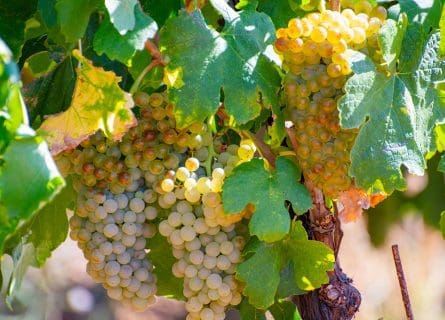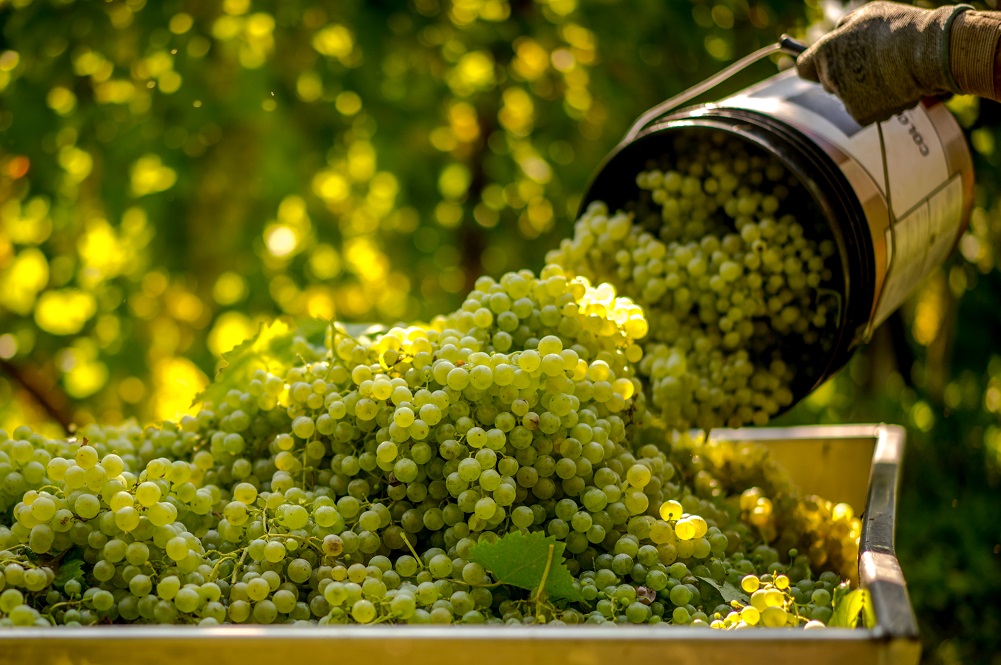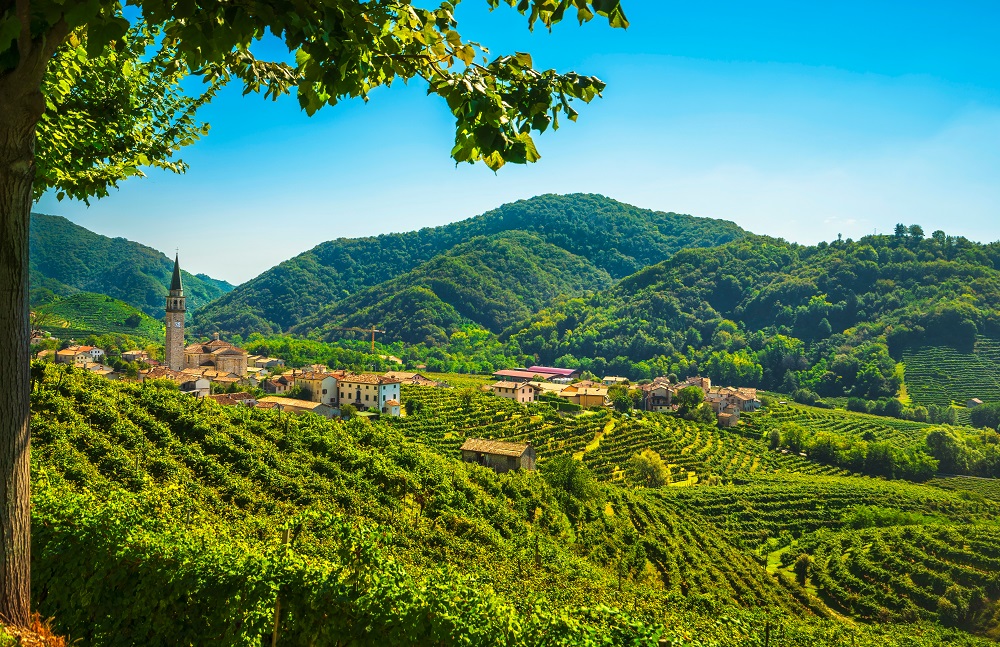
Marsanne Grape Variety: Jewel of the Rhône
September 7, 2022
Uncover the allure of Marsanne grape variety. From its traditional role in Rhône blends to the new wave of single-varietal Marsanne wines.
Estimated reading time: 8 minutes
From one perspective, Glera is the most important white grape cultivated in Italy today. The backbone of all-white Prosecco is responsible for a global phenomenon that has no equal; few consumers around the world have not sipped a glass of Italy’s leading bubbly. Moreover, while overall sales of red wine continue to stagnate in key European markets, sparkling wine remains in hot demand. Or as Daniel Mettyear, Head of Research at IWSR Drinks Market Analysis, says: “Sparkling wine has transformed from a one-dimensional celebratory/end-of-year tipple to a more day-to-day drink that works across a range of occasions and moments. It is easy to pair with food, and the alcohol levels are not too high.”

Guide to Italian White Wine: Read more
And yet, most wine lovers had never even heard of Glera until 2009. Indeed, renaming the Prosecco grape started a chain reaction that propelled a formerly obscure region into international stardom. Responsible for maintaining the livelihoods of thousands of growers, the continued popularity of Glera has much riding on it. So the only question is: What direction will the Prosecco industry take next?
Prosecco has been made in the hills of northeast Italy for many centuries. Once inhabited by a Celtic tribe known as the Veneti, the regions of Veneto (Prosecco’s heartland) and Friuli Venezia were absorbed into the Roman Empire in the 3rd century BC. Before that occurrence, both the Etruscans and Greeks promulgated viticulture across Italy and were probably responsible for introducing the Glera grape. However, the ancients’ wines bore little resemblance to what we drink today: Glera would have been fermented in clay jars before the wine was deliberately oxidized, sweetened, and adulterated with herbs. Nevertheless, this potent brew was the toast of the Western Roman Empire, a political behemoth that endured until 476 AD. Sparkling wine, meanwhile, did not start to appear in the region until the early 20th century.
However, the first mention of the word Prosecco, or rather a historical precursor, was recorded in the late 16th century. Historians note that an English tourist, Fynes Moryson, referenced ‘Prosecho’ during a trip to Veneto, singing its praises as “one of the most famous wines of Italy.” Named (we assume) after a small village in the region, most viticulturists are confident that Prosecco is indigenous to this part of Europe. By this point, Verona and its environs were under the control of the Venetian Empire, stretching from Friuli to the Mediterranean island of Corfu. This was a highly prosperous time for northern Italy, with lucrative trading routes extending into northern Europe and the eastern Mediterranean.
In the 18th century, Prosecco’s modern spelling appeared in Aureliano Acanti’s book, published in Venice in 1754. Once again, the author was gushingly enthusiastic about the (still) wines from Glera: “And now I would like to wet my mouth with that Prosecco with its apple bouquet,” Acanti proclaimed. Yet, for the most part, Prosecco remained a local phenomenon. It was not until the discovery of the Charmat method that the category started to earn a reputation outside of northern Italy – global fame did not occur until the early 21st century.
Although the ‘secret’ of the traditional method became common knowledge in France in the mid-1800s, Italy’s sparkling wine industry was founded on a more convenient and cost-effective approach. Known as the tank or Charmat method, Federico Martinotti, native to the Asti region of Piedmont, discovered this simple formula for conducting secondary fermentation in a large vessel. However, it is generally agreed that Eugène Charmat made some improvements to the original recipe in the early 19th century, hence the widespread moniker ‘Charmat method.’
Nonetheless, the discovery revolutionized the region’s wine industry; initially made as a very sweet sparkling wine, drier styles began to appear in the 1900s as the fashion swung towards enjoying fizz as an aperitif. Finally, at the turn of the Millennium, US firm Mionetto started introducing this quaffable fizz to American consumers. The rest, as they say, is history.
But although exports – and domestic sales – skyrocketed in the early 2000s, there was still a thorny issue to address. For many decades, the term Prosecco was used to refer to both the grape and the style, despite local growers’ adoption of the synonym Glera. Therefore, producers in nations such as Australia were legally entitled to market their cut-price bubbly as ‘Prosecco,’ much to the chagrin of the Italians. However, the global success of the category finally forced growers to take legal action in 2009. Henceforth, Prosecco could only refer to wine made in a wide geographical area (including Veneto and Friuli Venezia), and the grape’s name was legally changed to Glera. It is often assumed that the term Glera refers to one variety. Yet there are three distinct versions: Glera Lungo, Glera Tondo, and Glera Nostrano.
Nevertheless, the vineyard has few practical differences despite the genetic variation. Glera, for the most part, is a late-ripening white grape, justly celebrated for its ability to maintain fresh acidity late into the season. However, it delivers high yields unless its natural vigor is controlled. This will lead to a very neutral and characterless base wine. Of course, much depends on the priorities of the winemaker in question.
According to the appellation rules, growers can market a still, semi-sparkling (frizzante), or fully sparkling wine as Prosecco DOC. In practice, however, only a tiny volume of still wines are produced, much less exported. As a result, wineries across the region, both large and small, know where the real money lies.
The critical mass of wines rely on the Charmat method to achieve their sparkle. The initial stages are a mirror image of Champagne: grapes are pressed as whole bunches to avoid any extraction of bitter phenolics. So to achieve a fresh and fruity base wine, the pressing takes place immediately after picking and is done very gently. The juice is then clarified before the primary fermentation begins. This is typically undertaken in stainless steel tanks, carried out in warmer temperatures than for still white wines.
The first fermentation is short and straightforward; however, the duration of the second vinification depends on the end goal. Cheaper wines undergo a very rapid secondary fermentation in tank – yeast and sugar are added to the still wine, kick-starting a process that releases CO2 into the tank. The wine is filtered and often bottled relatively soon after the harvest. But superior base wines may stay in tank for longer, using automated ‘paddles’ to mix up the lees (dead yeast cells) and wine regularly. This enhances the complexity and mouthfeel of top-quality Prosecco.
But certain wineries take it one step further. The Bolla family, owners of the Valdo brand, release a small volume of traditional method Prosecco called Valdo No.10. Matured for approximately 12 months on the fine lees, it is a wonderful example of the creamy complexity that can flow from the Glera grape. This variety is sometimes damned with faint praise as being “fun to drink.” Yes, many commercial Proseccos are hardly earth-shattering, but that doesn’t mean leading producers should limit their ambitions.
No country has as many sparkling wine appellations as Italy – they stretch the length and breadth of the peninsula. Yet, there is only one regional brand that has captured the imagination of consumers worldwide. And while we greatly admire the delicious wines being made in Franciacorta and TrentoDoc, they cannot rival (at least in volume) the international clout of Prosecco. This is both a strength and a weakness: the unprecedented success of DOC Prosecco has blinded consumers to the hierarchy and diversity that now exists within the category.

The main catalyst for this quality realignment was the promotion of the Conegliano Valdobbiadene subzone to DOCG status in 2009. The authorities decided to create a new quality pyramid, with the expansive Prosecco DOC at the base. Next in line is Prosecco di Treviso DOC, limited to the subregion of Veneto; entry-level wines can be made in both Veneto and Friuli Venezia. After Conegliano Valdobbiadene, you’ll find Prosecco’s ‘Grand Cru’: Superiore di Cartizze. Interestingly, the word Prosecco does not appear on the label to dissociate the finest wines from the DOC strata. Instead, this represents the crème de la crème of Italian sparkling wine, equal in quality (but not style) to top-notch Franciacorta. Think of Cartizze as a food wine, ideally matched with scallops, roast sea bass, or even Sichuan dishes.
Of course, the eternal image of Prosecco is one of quaffable weekend fodder: a light, refreshing, and fruity sparkling wine. And indeed, many DOC wines conform to that stereotype. However, there are clear differences within the regions due to variances in terroir. In Conegliano, for example, the district tends to produce richer wines with aromas of pineapple and guava; Valdobbiadene is known for its savory notes on the finish. In addition, growers continue to demarcate over 40 Rive (climats or vineyard sites) throughout the zone. The ancient hills of Cartizze, celebrated throughout northern Italy, are the most important of these unique terroirs.
Every year, select parcels of old vines yield the most creamy, complex, and elegant Prosecco wines imaginable. Yet, when we think of terroir, the coming together of variety, soil, and landscape, we seldom regard Prosecco as a wine defined by its origins. So it’s time to correct that oversight: Italy’s most famous sparkling wine is as terroir-driven as Champagne. From familiar brands to individual vineyard expressions, Prosecco is far from being a one-trick pony.
If you would like us to customize an exclusive luxury tour, contact us and let us know your travel plans. We offer luxury food and wine tours for private groups of a minimum two guests. In addition, all of our private, chauffeured tours are available year-round upon request.

